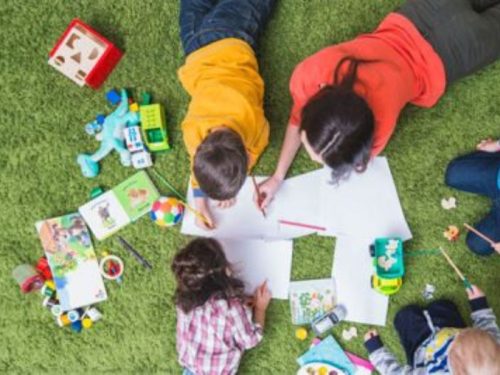Encourage peer-to-peer learning

Some years ago, a friend shared his first-time experience of coaching a girls’ softball team. In one of their first practices, he was trying to instruct the girls on how to throw overhand instead of pushing the ball under-arm. Try as he might, he couldn’t get the girls to throw the ball the way he showed them, and his frustration became apparent. His older daughter was watching. “Dad,” she said, “get them down on their knees and have them throw.” She demonstrated, the girls followed, and they began to throw overhand!
On another occasion, he was trying to get his pitchers to throw the ball so that it traveled over the home plate, not easy for 11-year-olds. Again, his daughter came to the rescue. At her suggestion, she and four members of the team went to another part of the field. In half an hour, they returned and proceeded to throw strikes.
The moral of the stories: Kids helping kids (aka peer-to-peer learning) is a powerful and untapped resource. The purpose of this essay is to suggest ways and means by which children can help their peers and younger kids to enjoy fun and fitness, through play and sports.
Ask an old timer about how he learned to play during childhood and he/she will tell you about voluntary participation. Years ago, there was a tradition of kids managing, coaching, and umpiring their peers. This was informal play, not the formal leagues we have today. Children organised their own games, taught each other how to play, and kept score. They made bats and hockey sticks out of tree limbs, balls out of rags, and goal-posts out of broom sticks. These traditions have been lost in the modern era of hi-tech sports, professional coaches, certified umpires and adults running the show. Kids today aren’t having fun because they don’t have the ownership opportunities their predecessors did.
In the history of education, there’s a long tradition of peer teaching and learning (reportedly invented in ancient India). In the mid-19th century, Quaker educator Joseph Lancaster, who couldn’t afford teachers in his school for poor children, successfully utilised children as teachers. Others (Bell and Fowle) expanded Lancaster’s monitorial system. This evolved into the concept of ‘cross-age learning’ which was practised throughout the US in the early 20th century.
Missing in the history of sports is youth and adult colleagueship — adults learning from youth and vice versa. Young people can teach a variety of skills to adults. As we learn from each other and share responsibilities, there will be a change in adults’ attitudes on the abilities and roles of kids. This exchange will surely sensitise us to “the myth of adult wisdom”.
There’s a self-evident logic about the efficacy of kids tutoring kids and kids coaching kids. In the process, both parties learn how to develop skills. Kids are enthused when given the opportunity and responsibility to help others, especially younger children. Invariably, they are excited about such work which often results in improving their self-esteem. In addition, they learn tutoring and mentoring skills, and even more important, the virtues of creativity, patience and empathy. In a real way, they begin the process of learning to learn and developing insights into managing their own education.
Kids helping kids is an expression of caring for others, an essential part of the journey to maturity, and central to what sports should be about. There are several reasons for school/college managements to encourage peer-to-peer learning in sports and games. Among them:
• It helps children develop a sense of community cutting across grade and age lines, and reduces traditional authoritarian barriers to communication.
• It can transform the intense competitiveness of contemporary sports into enjoyable and enriching cooperative endeavours.
• Peer learning can — indeed will — enhance the ego development and self-esteem of children and youth.
• It will empower youth to use their sports intelligence to improve on-field and on-track performance. Moreover skills, capability and kinesthetics intelligence becomes a currency of interaction, not just capability to score points.
• Peer learning gives youth and children opportunities to practise the adult roles of coach, referee, manager and even commissioner. This will enable them to acquire early experiences of discharging responsible roles in the adult world.
• It offers leadership training to youth and some of them become leaders of their communities.
• Children enjoy assuming “big brother” or “big sister” role-play opportunities which also teaches them responsibility.
Lastly, the self-confidence, self-esteem and character building that children engaged in peer-to-peer interaction and learning inevitably acquire, will teach them to become less competitive and more cooperative. Me-first and winning-at-any-cost psychologically injurious competitiveness will be reduced, and perhaps even eliminated.
Read:In praise of peer learning
(Dr. George A. Selleck is a San Francisco-based advisor to EduSports, Bangalore)















Add comment